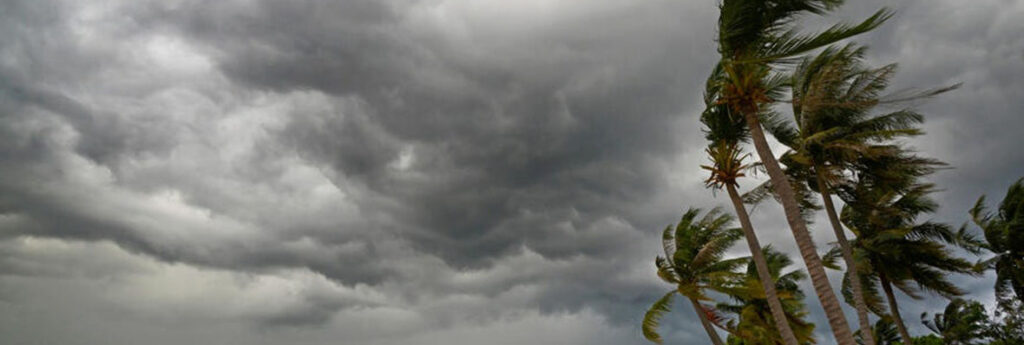Heavy rains pummeled the eastern Caribbean on Wednesday due to a weather system headed to Puerto Rico and other islands that was expected to develop into a tropical storm that could unleash flooding and landslides.
The US National Hurricane Center in Miami said the storm system was expected to pass south Puerto Rico on Wednesday night, then brush the northern shores of Hispaniola the following day on a path that could take it to the US mainland by the weekend.
“I don’t want people to lower their guards, because this system is quite dangerous,” said Ernesto Morales with the US National Weather Service in San Juan. “This is not (Hurricane) Maria, but it will bring a lot of rain.”
Donald Trump approved an emergency declaration request from Puerto Rico’s governor, who also activated the National Guard.
On Wednesday afternoon, the storm system had maximum sustained winds of 45 mph (75 kph). It was centred 320 miles (510 kilometres) east-southeast of Santo Domingo, Dominican Republic, and was moving west-northwest at 23 mph (37 kph).
The hurricane centre said the system was expected to strengthen before it moved near or over the Dominican Republic on Thursday and eastern Cuba on Friday, although it cautioned that it was still unclear what it would do in upcoming days: “Simply put, there are a lot of hurdles in the system’s way, so it is best to stay on the conservative side at the moment and continue to stress the large uncertainty after it leaves the Caribbean.”
Forecasters issued tropical storm warnings for Puerto Rico, the British and US Virgin Islands, St. Martin, St. Maarten, Saba, St. Eustatius, Turks and Caicos Islands and portions of Haiti, the Dominican Republic and the Bahamas. A tropical storm warning means that tropical storm conditions are expected within 36 hours.
The forecast warned the islands could experience 3 to 6 inches (8 to 15 centimetres) of rainfall, with up to 10 inches (25 centimetres) in isolated spots.
Officials in Puerto Rico expressed concern about the potential for landslides and flooding and noted the US territory is struggling with a spike in coronavirus cases while also still recovering from 2017’s devastating Hurricane Maria and a string of earthquakes earlier this year that damaged or destroyed hundreds of homes in the island’s south.
At a news conference Tuesday, Gov. Wanda Vazquez predicted the storm would cause power outages. Puerto Rico’s power grid was destroyed by Maria and the rebuilt system is fragile and susceptible to failures.
Earlier on Tuesday, the island’s power company and union leaders said electricity failed for more than 450,000 customers when a plant was knocked offline for unknown reasons.
On Wednesday, the director of Puerto Rico’s Electric Power Authority told WKAQ radio that he believed it was either sabotage or negligence. However, the head of transmission and distribution disputed those comments and told Radio Isla that it was too soon to make any conclusions.
Another outage occurred Wednesday after at least one transformer exploded in the capital of San Juan, leaving more than 33,000 customers without power.
The governor said that more than 300 shelters across the island were prepared to receive people if needed and that more than 130,000 face masks were available.
“We’ve lived through several emergencies at one time,” Vazquez said. “I want you to remain calm.”

